Cuttlefish
Sepiida

Cuttlefish are cephalopods in the order Sepiida, renowned for instantaneous camouflage, expressive signaling, and agile jet propulsion. Unlike octopuses, they have a porous internal shell called the cuttlebone that regulates buoyancy. With W-shaped pupils, eight arms plus two shootable feeding tentacles, and sophisticated vision (including polarization sensitivity), cuttlefish are versatile reef and sand-flat predators that hunt crustaceans and fishes.
🔬Classification
📏Physical Features
🌊Habitat Info
⚠️Safety & Conservation
Identification Guide

Key features include a broad, flattened mantle bordered by a continuous fin, W-shaped pupils, and an internal cuttlebone (often found washed ashore). During hunting, watch the pair of tentacles shoot out from between the arms. Skin can raise papillae to mimic rocks or algae; dynamic bands ripple along the body when signaling or stalking.
Differences from Similar Species
- Octopus: lacks cuttlebone and lateral fins; has only eight arms (no long feeding tentacles) and a rounder body.
- Squid: more torpedo-shaped with triangular fins; typically more pelagic and have longer, more streamlined mantles.
Juvenile vs. Adult
Juveniles are miniature versions with proportionally large eyes and fast color play; adults show thicker mantles, more pronounced papillae, and engage in elaborate mating displays and egg-laying behavior.
Top 10 Fun Facts about Cuttlefish
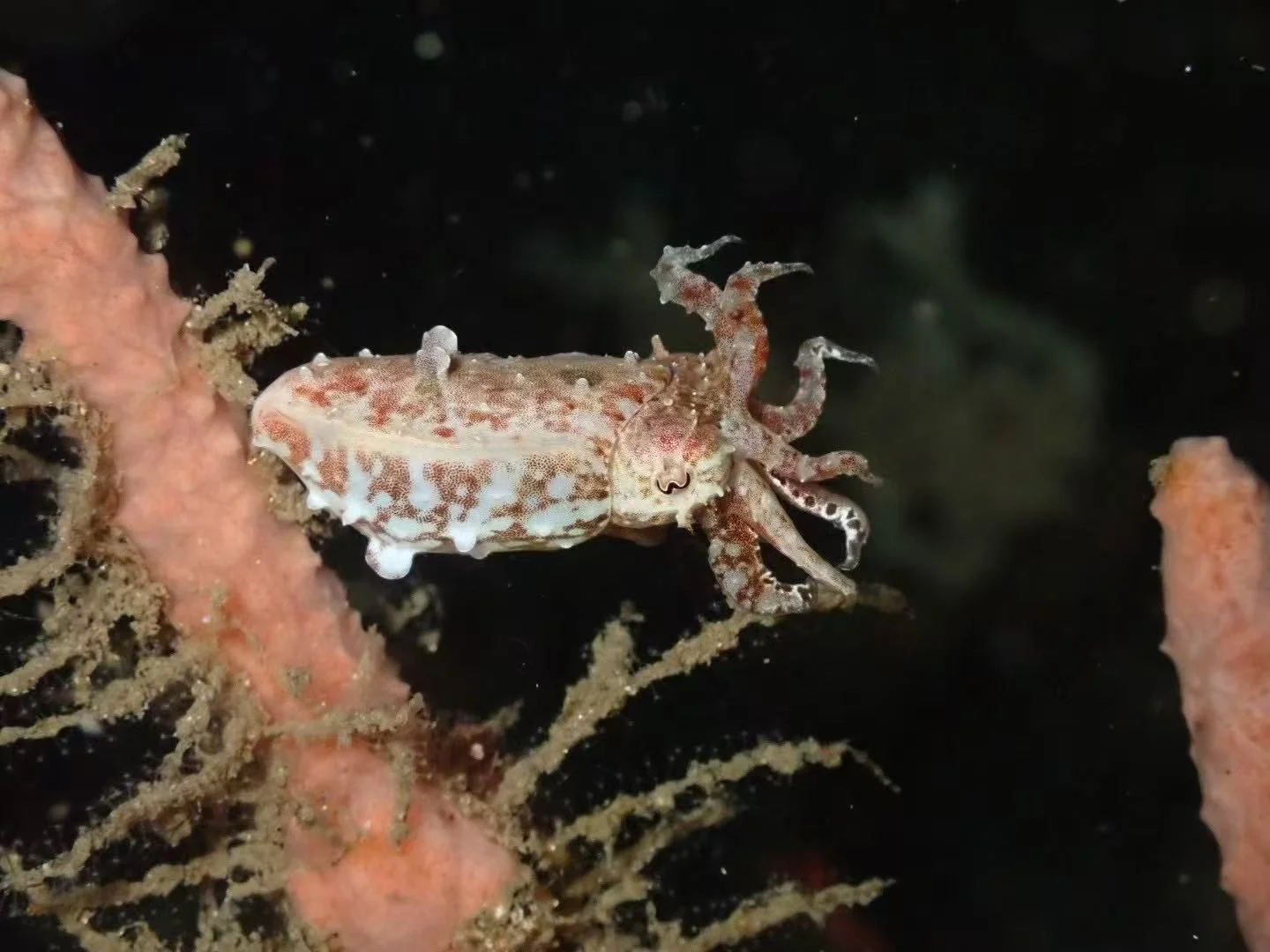
1. Built-in Buoyancy
The cuttlebone’s gas-filled chambers let cuttlefish fine-tune buoyancy with minimal effort.
2. Lightning Camouflage
Chromatophores and iridophores enable sub-second color and pattern shifts.
3. Two Hidden Spears
A pair of retractable tentacles launch to grab prey with sticky clubs.
4. Polarization Vision
They can detect polarized light, aiding contrast and communication.
5. Living Screens
“Zebra” bands and eye-ring flashes are used in hunting and social signaling.
6. Smart Hunters
Problem-solving and learning abilities are demonstrated in lab and field.
7. Sepia Ink
Defensive sepia ink clouds provide visual and chemical cover.
8. Short Lives
Most species live 1–2 years and are semelparous (adults die after breeding).
9. Seasonal Gatherings
Some species form large spawning aggregations in shallow coastal waters.
10. Egg Grapes
Eggs are often ink-dyed black and clustered like grapes on branches or coral.
Diving & Observation Notes

🧭 Best Observation Approach
Move slowly over sand/grass edges and rubble; scan for hovering individuals and banded signaling. Keep low and let them approach—cuttlefish are curious if unthreatened. Avoid blocking retreat paths.
📸 Photography Tips
- Behavior Focus: Wait for tentacle strikes, zebra flashing, and courtship displays.
- Lighting: Use diffused light to preserve texture; side-light enhances papillae.
- Macro to CFWA: Macro for small species; close-focus wide-angle for larger cuttlefish during displays.
- Shutter: Moderate speeds capture ripple bands; faster speeds freeze tentacle launch.
⚠️ Safety & Ethics
- Do not prod or chase; stress interrupts hunting and mating.
- Give extra space during egg-laying; avoid touching egg clusters on branching corals or rubble.
- Be cautious with flamboyant cuttlefish—reported toxic; admire from distance.
🌏 Local Dive Guide Insights
- Anilao (Philippines): Reliable night sightings and egg clusters on gorgonians or rubble.
- Lembeh Strait (Indonesia): Frequent encounters with flamboyant and broadclub cuttlefish on muck sites.
- Bali (Tulamben/Seraya/Nusa Penida): Good dusk hunts over sand and seagrass edges.
- Raja Ampat (Indonesia): Reef ledges and bommies host courting and spawning adults.
Best Places to Dive with Cuttlefish
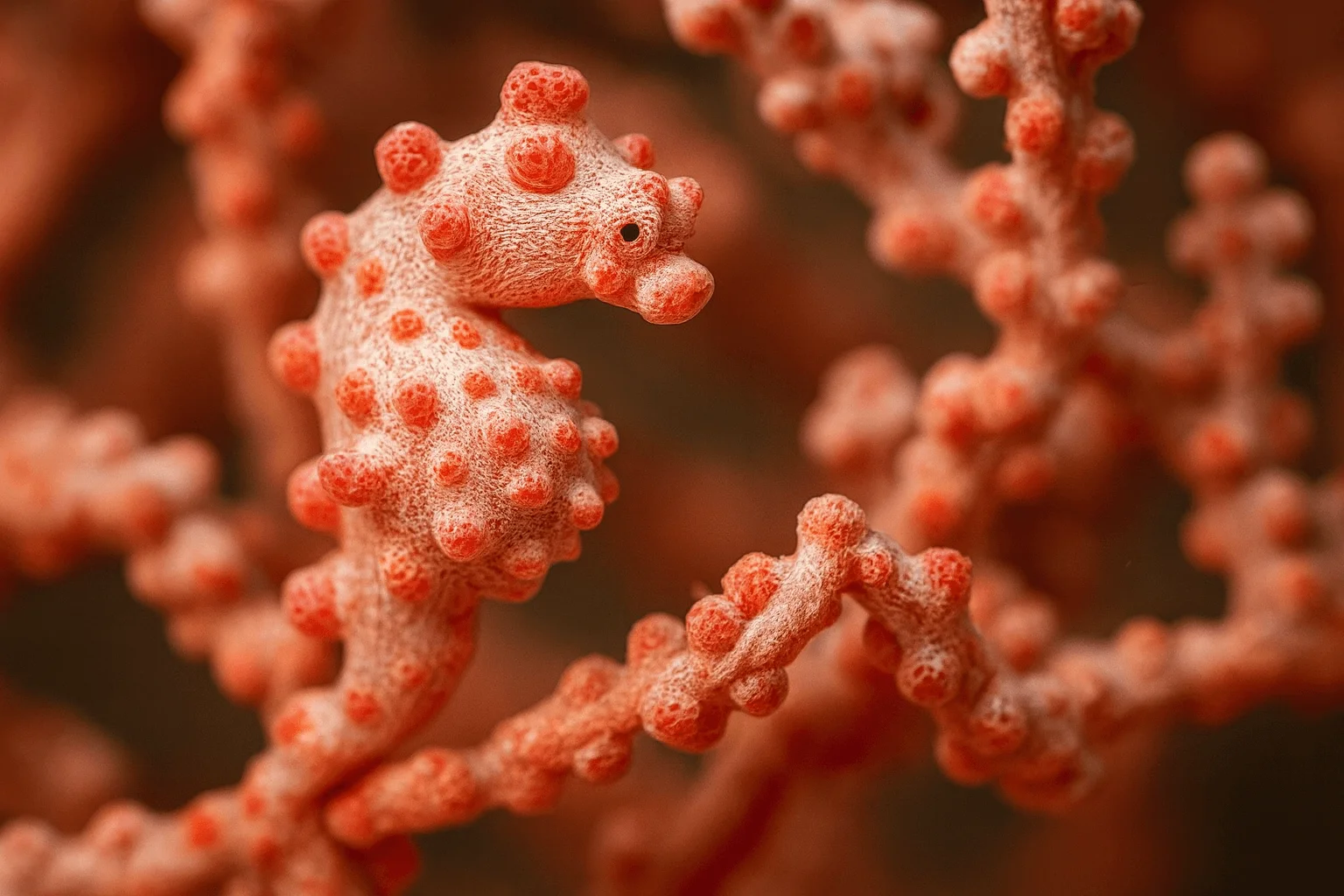
Anilao
Anilao, a small barangay in Batangas province just two hours south of Manila, is often called the macro capital of the Philippines. More than 50 dive sites fringe the coast and nearby islands, offering an intoxicating mix of coral‑covered pinnacles, muck slopes and blackwater encounters. Critter enthusiasts come for the legendary muck dives at Secret Bay and Anilao Pier, where mimic octopuses, blue‑ringed octopuses, wonderpus, seahorses, ghost pipefish, frogfish and dozens of nudibranch species lurk in the silt. Shallow reefs like Twin Rocks and Cathedral are covered in soft corals and teem with reef fish, while deeper sites such as Ligpo Island feature gorgonian‑covered walls and occasional drift. Because Anilao is so close to Manila and open year‑round, it’s the easiest place in the Philippines to squeeze in a quick diving getaway.
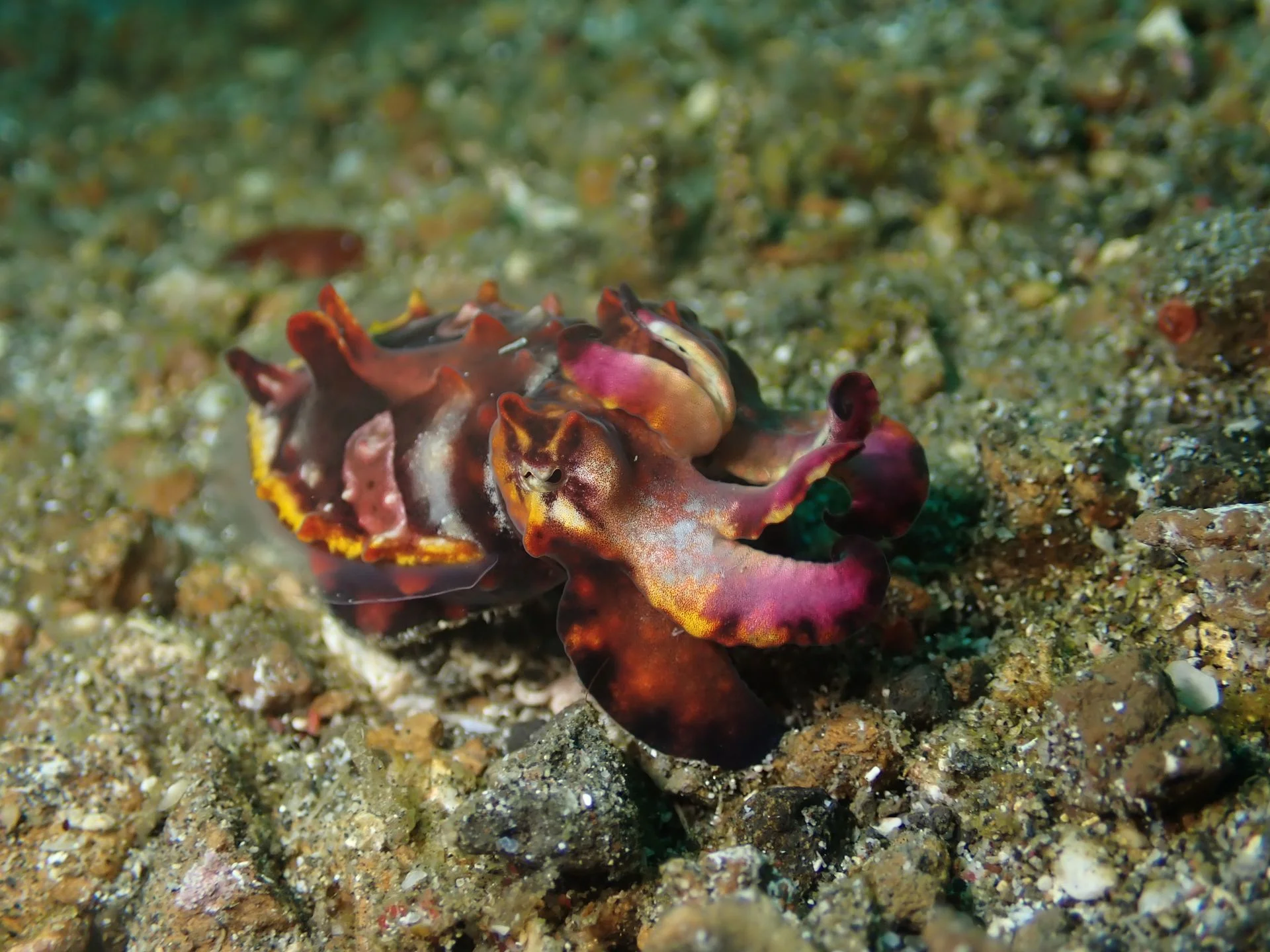
Lembeh
The Lembeh Strait in North Sulawesi has become famous as the muck‑diving capital of the world. At first glance its gently sloping seabed of black volcanic sand, rubble and discarded debris looks bleak. Look closer and it is teeming with weird and wonderful life: hairy and painted frogfish, flamboyant cuttlefish, mimic and blue‑ringed octopuses, ornate ghost pipefish, tiny seahorses, shrimp, crabs and a rainbow of nudibranchs. Most dives are shallow and calm with little current, making it an ideal playground for macro photographers. There are a few colourful reefs for a change of scenery, but Lembeh is all about searching the sand for critter treasures.
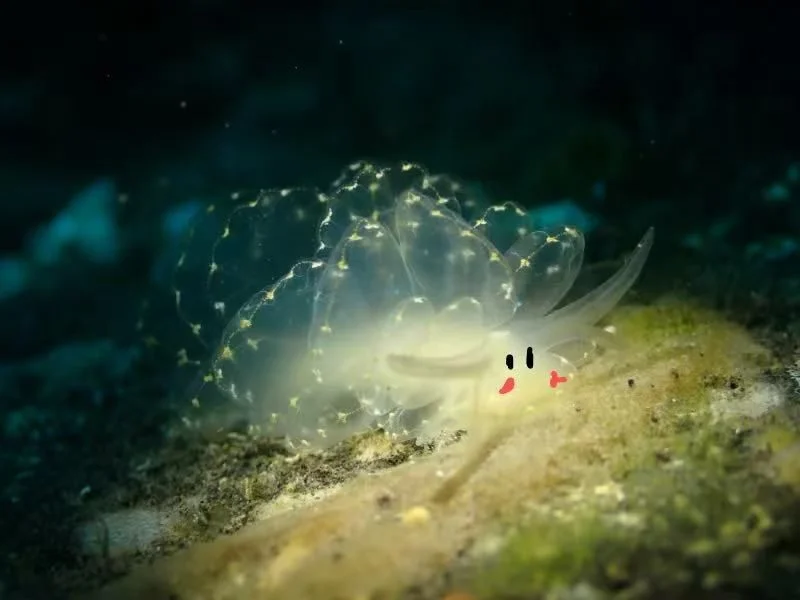
Tulamben(Bali)
Tulamben sits on Bali’s northeast coast and is best known for the USAT Liberty shipwreck – a 125‑metre cargo ship torpedoed in WWII that now lies just a short swim from shore. Warm water, mild currents and straightforward shore entries make diving here relaxed for all levels. Besides the wreck, divers can explore coral gardens, black‑sand muck sites and dramatic drop‑offs. Macro lovers will find nudibranchs, ghost pipefish, mimic octopus and pygmy seahorses, while big‑fish fans can encounter schooling jackfish, bumphead parrotfish and reef sharks. With a compact coastline packed with variety, Tulamben delivers world‑class wreck and critter diving without long boat rides.
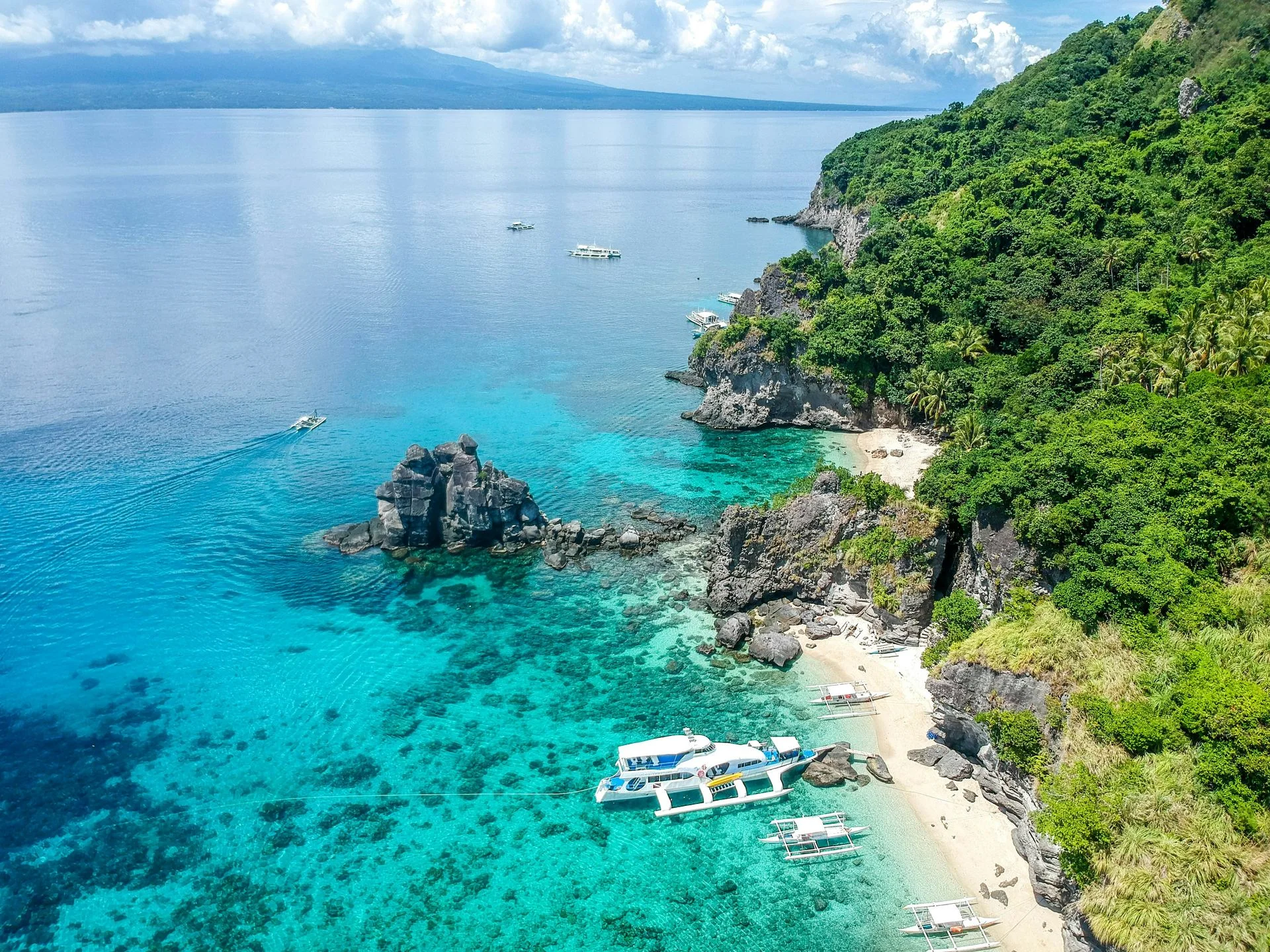
Dumaguete
Dumaguete on the southeast coast of Negros is the jumping‑off point for some of the Philippines’ most diverse diving. Along the nearby town of Dauin, a series of shallow marine sanctuaries and black‑sand slopes hide critters galore: frogfish, flamboyant cuttlefish, mimic octopus, ghost pipefish, seahorses, pipefish and nudibranchs. Artificial reefs made from car tyres and pyramids provide extra habitat. Offshore, Apo Island’s walls and plateaus burst with hard and soft corals, schooling jacks and barracudas, and friendly green turtles. With day trips to Oslob’s whale sharks or Bais’ dolphin‑watching, and excursions to nearby Siquijor, Dumaguete offers a perfect mix of macro muck diving and classic coral reefs.

Raja Ampat
Raja Ampat, the “Four Kings,” is an archipelago of more than 1,500 islands at the edge of Indonesian West Papua. Its reefs sit in the heart of the Coral Triangle, where Pacific currents funnel nutrients into shallow seas and feed the world’s richest marine biodiversity. Diving here means gliding over colourful walls and coral gardens buzzing with more than 550 species of hard and soft corals and an estimated 1,500 fish species. You’ll meet blacktip and whitetip reef sharks on almost every dive, witness giant trevally and dogtooth tuna hunting schools of fusiliers, and encounter wobbegong “carpet” sharks, turtles, manta rays and dolphins. From cape pinnacles swarming with life to calm bays rich in macro critters, Raja Ampat offers endless variety. Above water, karst limestone islands and emerald lagoons provide spectacular scenery between dives.